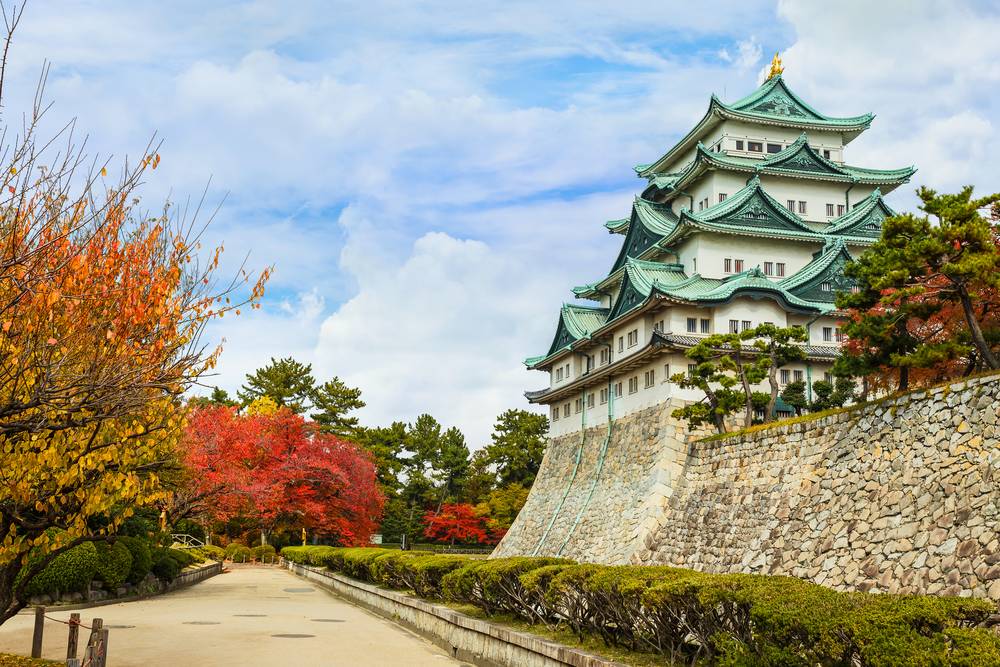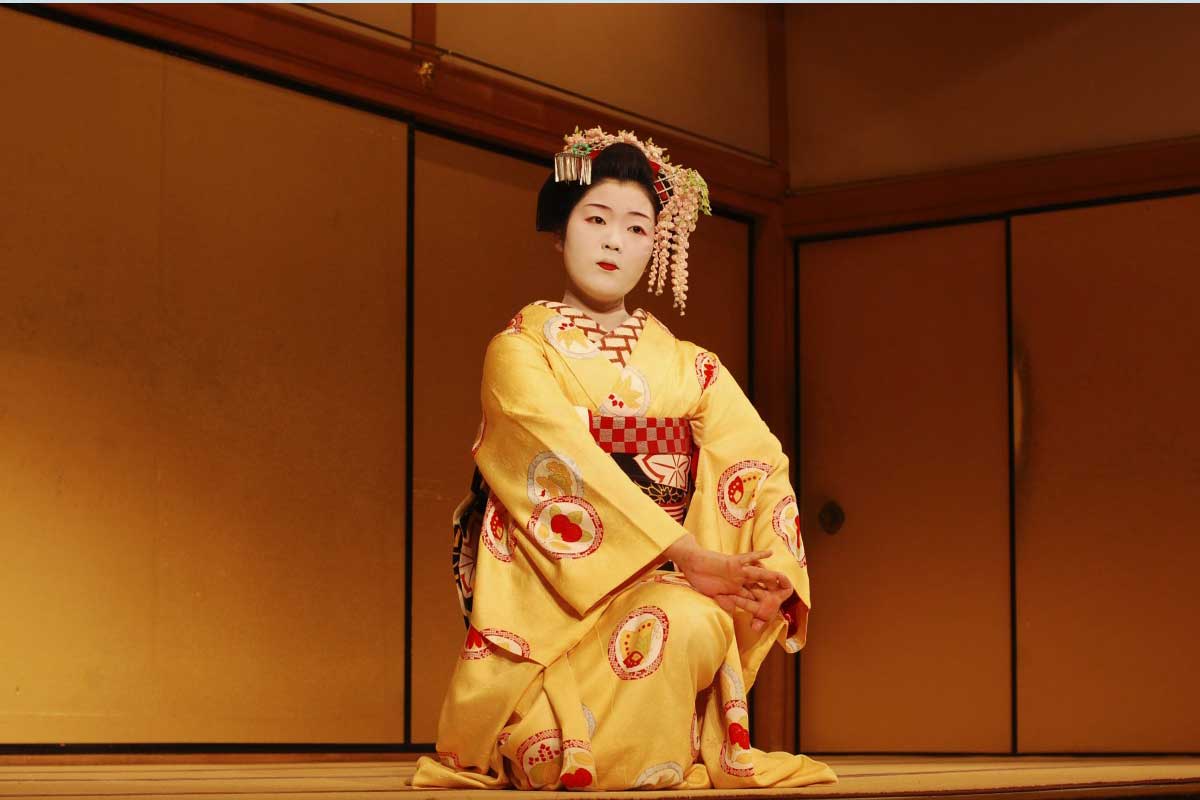Nagoya, Japan, is a city that defies superficial judgment, revealing its true character to those who venture beyond first impressions. It is a city of dynamic contrasts, where tradition and modernity coalesce, and where hidden treasures await discovery. From its rich cultural tapestry to its diverse culinary offerings and bustling cityscape, Nagoya stands as a mesmerizing destination for travelers seeking a deeper understanding of Japan’s intricate essence. As you embark on your journey through this city, let your curiosity guide you, and you will find that Nagoya’s enigmatic allure is a treasure trove waiting to be uncovered. In this article, we will explore some interesting facts about Nagoya, Japan. Keep reading.
Interesting facts about Nagoya, Japan
Nagoya is not only a city of historical significance but a thriving industrial hub with a diverse industrial landscape. Its landmarks and temples, with their rich history and spiritual significance, coexist harmoniously with its vibrant business and manufacturing sectors, making it a captivating destination for those seeking a blend of tradition and innovation in one extraordinary city. Below, you will find some interesting facts about Nagoya, Japan:
1. The Enigmatic Allure of Japan
Japan, a land of unparalleled intrigue and fascination, beckons to those who yearn for a profound cultural experience. Its cities, like jewels in a tapestry of tradition, possess a unique charm that captivates visitors from around the world. Among these urban marvels, Nagoya stands as a testament to Japan’s blend of modernity and heritage. As a major port, a bustling transportation hub, and an industrial powerhouse, it embodies the very essence of Japan’s economic prowess.
Nestled in the heart of the Chubu region, Nagoya reigns supreme as the largest city in this central part of Japan, boasting a magnetic allure that draws both locals and travelers alike. Notable for its distinction as a world-class production center, Nagoya is home to the renowned Toyota corporation, synonymous with automotive excellence. Furthermore, it is the birthplace of the pinball-style game known as Pachinko, an iconic part of Japanese gaming culture. For those seeking a journey from Nagoya to Kyoto, it’s a favored route that promises a glimpse into the mesmerizing tapestry of Japan’s cultural heritage.
2. Nagoya’s Hidden Treasures
Nagoya, a city that some might hastily label as “Japan’s most boring,” conceals a wealth of treasures beneath its seemingly unassuming exterior. In truth, this city offers a treasure trove of museums, temples, and meticulously maintained parks that challenge such stereotypes. With a closer look, one discovers that Nagoya is a place of immense cultural significance. The city’s museums are veritable emporiums of history and art, with collections that span centuries, illuminating the evolution of Japanese culture.
Nagoya’s temples, resplendent with intricate architecture and serene surroundings, provide a sanctuary for spiritual seekers and an opportunity for reflection in the heart of the metropolis. The meticulously maintained parks, a testament to Japan’s commitment to natural beauty, offer respite from the urban bustle and a chance to immerse oneself in the tranquility of nature. Nagoya, it seems, is a city with a complex and multifaceted character that unveils itself to those willing to explore its hidden gems.
3. Cultural Mosaic of Nagoya Japan
Nagoya, as a microcosm of Japan’s diverse cultural landscape, offers a captivating fusion of tradition and modernity. Here, ancient rituals and contemporary innovations harmoniously coexist, creating a tapestry of experiences that cater to a wide spectrum of interests. Visitors can partake in age-old tea ceremonies, where the art of serving tea is elevated to a spiritual practice, or they can witness the cutting-edge technological advancements showcased in Nagoya’s industries.
The city’s annual festivals and events celebrate Japan’s rich cultural heritage, from the mesmerizing art of ikebana flower arrangement to the exhilarating feats of sumo wrestling. Nagoya stands as a living testament to the ever-evolving nature of Japan’s identity, where time-honored customs persist alongside the latest trends, making it a captivating destination for the culturally curious.
4. The Gastronomic Delights of Nagoya
For those with an appetite for culinary adventures, Nagoya’s gastronomy is a symphony of flavors that tantalize the palate. The city boasts a rich tapestry of regional delicacies, with the signature dish being the delectable Nagoya-style chicken wings, known as Tebasaki. These succulent morsels are marinated in a mouthwatering blend of spices, deep-fried to perfection, and enjoyed with a side of refreshing cabbage and an ice-cold beer. Moreover, Nagoya is renowned for its unique take on the classic Japanese comfort food, udon noodles. The local specialty, Kishimen, features flat, wide noodles swimming in a savory soy-based broth, elevating noodle enjoyment to new heights. In Nagoya, food isn’t merely sustenance; it’s a voyage through a diverse and enticing culinary landscape that caters to all discerning tastes.
5. The Pulsating Heart of Nagoya
Nagoya’s beating heart is a testament to its dynamic spirit. Beyond the tranquil temples and serene parks, the city pulsates with energy and innovation. It is a thriving hub of commerce, where towering skyscrapers house the offices of global corporations, and bustling marketplaces resonate with the vibrant exchange of goods and ideas. Nagoya’s nightlife is a kaleidoscope of entertainment, from traditional theater performances to cutting-edge clubs where music and dance reign supreme. The city’s streets are an ever-evolving canvas, adorned with contemporary art installations and illuminated by neon signs that beckon the adventurous to explore the nocturnal wonders. In essence, Nagoya’s beating heart is a vibrant symphony of ambition and creativity that harmonizes with the city’s more tranquil facets, creating a unique and captivating urban experience.
6. Nagoya Dome: A Landmark in Japan’s Sporting and Entertainment Scene
The Nagoya Dome, a renowned and iconic sports and entertainment venue, has been an integral part of the vibrant Japanese cityscape since its establishment in the year 1997. Situated in the heart of Nagoya, Japan, this remarkable structure stands as a testament to architectural ingenuity and modern design. Boasting a seating capacity of 40,500 for sporting events and an impressive 49,000 for concerts of diverse genres, Nagoya Dome offers a unique and dynamic setting for a wide range of entertainment experiences. What sets the Nagoya Dome apart from other venues is its distinctive architectural feature – it proudly dons the geodesic dome design, making it a visually striking presence in the city.
7. Legoland Nagoya: Where Imagination Knows No Bounds
Nagoya, Japan, is not only known for its historical landmarks and cultural heritage but also for its vibrant array of theme parks that cater to a diverse audience. One such gem in the city’s entertainment landscape is Legoland Nagoya, a world of amusement and fantasy that captivates people from all walks of life. Within the colorful and imaginative realm of Legoland, visitors are transported to a world where creativity and playfulness merge seamlessly. It’s a place where both young and old can indulge their sense of wonder, explore intricate Lego creations, and partake in thrilling adventures, creating cherished memories that last a lifetime.
8. Educational Excellence: Nagoya’s Academic Institutions
Nagoya, a city rich in culture and innovation, also boasts a thriving academic community. Among the numerous educational institutions that grace this city, Nagoya University stands as a prestigious pillar of learning. Its history traces back to the pursuit of knowledge and enlightenment. Established in 1939, it has been nurturing inquisitive minds and fostering academic excellence ever since. Alongside Nagoya University, institutions like the Nagoya Institute of Technology, founded in 1949, and Nagoya City University, established in 1950, further contribute to the city’s academic prowess. These centers of learning are pivotal in shaping the intellectual landscape of Nagoya, and their dedication to education is commendable.
9. Nagoya’s Historic Landmarks: Nagoya Castle and More
One of the city’s most significant landmarks is the Nagoya Fort, a testament to its rich history. This imposing castle was initially constructed in the years 1610-1612 but faced the devastating ravages of fire during World War II. However, Nagoya’s commitment to preserving its heritage was unwavering, and the castle was painstakingly rebuilt in 1959. The Nagoya Fort stands as a symbol of resilience, a living connection to the past that beckons travelers and history enthusiasts to explore its storied halls and magnificent architecture.
10. Atsuta Temple and Osu Kannon Temple: Icons of Nagoya’s Spiritual Landscape
Nagoya is not only a city of historical significance but also a spiritual haven. The Atsuta Temple and its adjacent library hold the distinction of being among the oldest and most revered Shinti shrines in all of Japan. Here, visitors can immerse themselves in the tranquility of the temple’s surroundings and experience the profound spirituality that infuses the air.
For those seeking a deeper connection to Japan’s spiritual heritage, Nagoya also offers the serene sanctuary of Osu Kannon Temple. Nestled in the heart of the city, this temple radiates an aura of peace and spiritual awakening, making it a must-see destination for travelers who wish to explore Nagoya’s cultural and spiritual tapestry.
11. Nagoya: The Thriving Hub of Industry and Innovation
Nagoya’s thriving economy and dynamic business landscape have cemented its status as a formidable industrial hub. The city has evolved into a bustling epicenter for various industries, hosting notable players such as the Toyota Motor Corporation. Nagoya’s dynamic spirit and the innovative prowess of its companies have contributed significantly to the global automotive industry.
12. Diversity and Dynamism in Nagoya’s Industrial Landscape
The industrial might of Nagoya extends far beyond the automotive sector. The city is a multi-faceted powerhouse with diverse industrial facets. From Iron and Steel Works to textile mills, aviation factories to automotive production facilities, and the manufacturing of chemicals, plastics, and electronics, to the production of fertilizers, Nagoya’s industrial sector is a symphony of diversity and dynamism.
The Iron and Steel Works breathe life into the city’s industrial core, forging the materials that underpin modern construction and manufacturing. Textile mills contribute to the city’s rich textile heritage, and aviation factories push the boundaries of aeronautical engineering. The automotive works, which are famous worldwide, produce vehicles known for their quality and innovation. The chemical, plastics, electronics, and fertilizer plants further underscore Nagoya’s pivotal role in Japan’s economic landscape.
13. Nagoya: The Capital of Aichi Province
Nagoya, the fourth largest city in Japan, is not just an ordinary urban center but a vital cornerstone of the Land of the Rising Sun, and it proudly serves as the capital of Aichi province. This sprawling metropolis is strategically nestled in the heart of Chubu, the central region of Japan, imparting a sense of geographical significance. Its location in the southwestern part of Chubu ensures that Nagoya plays an instrumental role in the nation’s transportation network, making it a veritable lynchpin for connectivity.
14. Nagoya: The Nexus of Transportation
Nagoya isn’t merely a city; it’s a bustling crossroads, a veritable web of transportation networks that pulse through the country. The city boasts a prestigious status as a colossal transportation hub within Japan, bearing the weight of an impressive responsibility. The iconic Shinkansen, known as the bullet train, effortlessly courses through Nagoya, linking the bustling metropolises of Osaka and Tokyo. This high-speed railway system, serving as a lifeline for commuters, places Nagoya at the epicenter of Japan’s transit infrastructure. Furthermore, Nagoya extends its reach to the international stage through its strategically positioned port, facilitating global trade and connectivity. This well-thought-out design is a testament to Japan’s commitment to ensuring accessibility for its citizens and visitors alike.

15. Nagoya: A Tapestry of Japanese Handicrafts
One of the distinguishing features of Nagoya is its rich legacy in the realm of Japanese handicrafts, an age-old tradition that has been nurtured and perfected within the city for centuries. The city proudly showcases a stunning array of traditional crafts that have withstood the test of time. From the intricate Arimatsu and Narumi dye techniques to the masterful craftsmanship of Wood Geta Clog Straps, from the artistry of Shippo enamelware to the delicate beauty of Yuzen silk dyeing, Nagoya is a veritable treasure trove of artisanal excellence. The city also shines with the art of candle-making and the intricacies of Sekku Ningyo, ornate dolls used in Japanese festivals. Additionally, the city is renowned for Ohi ceramics and hosts many other artistic expressions, making it a paradise for those who appreciate the finer aspects of Japanese culture.
16. Nagoya: A Historical Nexus of Commerce and Culture
Delving into the annals of history, Nagoya reveals itself as not just a place of commerce but as a cradle of political influence. It served as a thriving marketplace where serious buying and selling took place, catalyzing economic growth in the region. Furthermore, it was the political seat of the powerful Owari lords, a clan closely affiliated with the influential Tokugawa clan. These lords, particularly Tokugawa Muneharu, the seventh lord of Owari, played a pivotal role in fostering both commerce and the arts within the city. Muneharu’s profound interest in drama and theatrical performances added a touch of opulence to his reign, which significantly enriched the cultural tapestry of Nagoya and the wider Tokugawa domain. Nagoya, thus, bears witness to a vibrant historical legacy that seamlessly interweaves commerce and culture, showcasing its multifaceted significance in Japan’s heritage.
17. The Name Nagoya: A Journey Through History
The origins of Nagoya’s name harken back to the annals of history, unfolding a fascinating tale of the city’s nomenclature. In the twelfth century, a prominent manor by the name of Nagano held sway in the region, its influence and prominence extending through the mid-14th century. This legacy, both illustrious and enduring, left an indelible mark on the local culture and vernacular. It is from this venerable lineage that the name “Nagoya” emerged. Over time, people realized the intriguing phonetic resemblance of “Nagano” to “Nagoya,” which ultimately led to the adoption of the latter as the city’s official appellation. This linguistic evolution serves as a testament to the historical depth and complexity that defines the city of Nagoya, weaving a rich tapestry of heritage and nomenclature.
18. Historical Introduction of Beer in Japan
At the close of the nineteenth century, beer, that beloved fermented beverage, made its debut in the Land of the Rising Sun. Japan, a nation with a rich and diverse culinary culture, was introduced to the world of beer during this period. This newfound addition to Japanese gastronomy marked the inception of a journey that would ultimately lead to a thriving beer industry in the country. Today, Japan is renowned for its diverse range of beers and breweries, and one can witness the remarkable growth of this industry in the bustling city of Nagoya.
19. The Magnificent Asahi Beer Factory in Nagoya
In contemporary times, Nagoya stands as a testament to Japan’s beer legacy with the presence of a colossal Asahi beer factory. This manufacturing marvel sprawls across the cityscape, producing an impressive variety of brews that cater to a wide spectrum of tastes. The factory’s significance is not merely confined to its production capabilities; it also serves as a symbol of Japan’s penchant for innovation and dedication to crafting exceptional libations. The Asahi beer factory in Nagoya has become a beacon for both locals and tourists alike, showcasing the harmonious blend of tradition and modernity that Japan so eloquently represents.
20. Twin Towers: A Record-Breaking Station Complex
Within the vibrant urban landscape of Nagoya, a remarkable architectural achievement awaits discovery: the Twin Towers, a station complex that boasts a prestigious title in the annals of the Guinness World Records. Nestled amidst this bustling city’s thriving transportation hub, the JR Central Towers, with their towering edifices, take center stage as the largest station building globally. These colossal structures are not merely feats of engineering but also serve as dynamic centers of commerce and cultural exchange. A testament to human ingenuity and architectural excellence, the Twin Towers continue to captivate the imaginations of visitors from across the globe.
21. A Cultural Hub: Nagoya Marriott and Takashimaya at the Assosia Hotel Tower
The Assosia Hotel Tower in Nagoya stands as a beacon of sophistication, seamlessly integrating commerce, hospitality, and culture. At its heart lies a testament to opulence and convenience, the Nagoya Marriott, offers resplendent accommodations and unparalleled service. Furthermore, Takashimaya, a revered name in the realm of high-end retail, graces the complex with its presence. This marriage of luxurious lodging and upscale shopping at the Assosia Hotel Tower creates an environment where both residents and tourists can immerse themselves in an all-encompassing experience of refinement and comfort.
22. Nagoya City Science Museum: A World of Discovery
In the heart of Naka-ku, Nagoya City, Shirakawa Park serves as the backdrop for the Nagoya City Science Museum, a place that beckons curious minds and eager learners from near and far. This museum’s history is one of rebirth and rejuvenation, as it was closed for a period but emerged even stronger and more enchanting. One of its most captivating features is a colossal planetarium, measuring a staggering 5 meters in diameter, making it the largest of its kind anywhere on Earth. This celestial wonder beckons stargazers and astronomy enthusiasts to explore the cosmos in an immersive and unparalleled fashion, underscoring the museum’s significance as a beacon of scientific education and wonder.
23. The Culinary Treasures of Nagoya
Nagoya, beyond its architectural marvels and cultural institutions, is renowned for its distinctive local cuisine. This city’s culinary landscape is adorned with a tantalizing array of flavors and dishes that are nothing short of culinary treasures. The local gastronomic delights include Kishimen, a flat and wide udon noodle dish bathed in a savory soy-based broth; Tebasaki, delectable deep-fried chicken wings that boast a unique and addictive spiciness; Red miso, a robust and hearty miso soup that defines the region’s culinary identity; Hitsumabushi, a multi-dimensional grilled eel dish that offers a symphony of textures and flavors; Chazuke, a comforting and nourishing rice soup often enjoyed as a soothing breakfast or late-night snack; and Tenmusu, a delightful fusion of tempura and onigiri, creating a convenient and satisfying snack. These are just a few of the many culinary gems that the town and its surrounding areas offer, beckoning gastronomes to embark on a flavorful journey of discovery through the heart of Nagoya’s food culture.
24. Nagoya: A Hub of Culture and History
Nagoya, a city nestled in the heart of Japan, boasts a rich tapestry of art and culture that lends it a unique charm. Among its most prized gems, the Tokugawa Art Museum stands as a bastion of Japan’s cultural heritage, housing a vast and intriguing collection of art treasures. This repository serves as a testament to the city’s reverence for art, embracing its role as a custodian of Japan’s artistic legacy.
25. A Thriving Metropolis: Nagoya’s Population
Situated as the fourth most populous urban area in Japan, Nagoya emerges as a bustling metropolis, brimming with life and vibrancy. The city’s population statistics, as of 2015, revealed its staggering stature with 9.10 million inhabitants populating the vast metropolitan area, of which 2.28 million people were residents within the city limits. This demographic diversity is a testament to Nagoya’s status as a beacon of urban life in Japan.
26. Resilience Amidst Destruction: Nagoya during World War II
The annals of Nagoya’s history are marred by the shadows of World War II, during which a tumultuous chapter unfolded. Approximately one-fourth of Nagoya’s urban landscape was ravaged by the relentless tides of war, leaving behind scars that serve as somber reminders of the city’s indomitable spirit. In a bid to safeguard lives and livelihoods, half of the city’s population was forced to evacuate, and the wheels of industry ground to a halt. Nagoya, like a phoenix, arose from the ashes of adversity, displaying an unwavering resolve to rebuild and prosper once more.
27. Nagoya’s Linguistic Palette: The Nagoya Dialect
The rich tapestry of Nagoya’s culture is not confined to its artistic heritage and historical resilience alone; it extends to the very language spoken by its denizens. The Nagoya dialect, known as “Nagoya-ben,” graces the western half of Aichi Prefecture, with Nagoya at its epicenter. This unique linguistic expression is not just a local vernacular but a cherished facet of Nagoya’s identity. Additionally referred to as the Owari dialect or “Owari-ben,” it weaves a linguistic tapestry that sets Nagoya apart, embodying its distinct cultural legacy, one that has withstood the test of time. Traveloka: Southeast Asia’s Leading Travel Platform. Best prices for hotels, flights, buses, trains, & attractions
28. Diverse Museums and Cultural Attractions in Nagoya
Nagoya, a vibrant and culturally rich city in Japan, boasts a plethora of museums, each offering a unique and captivating experience. These institutions span a wide spectrum of artistic, historical, and scientific interests, catering to the diverse tastes of its residents and visitors alike. The city’s cultural landscape encompasses both conventional and modern art museums, showcasing a fusion of traditional Japanese aesthetics and cutting-edge contemporary expressions. Art enthusiasts can wander through the hallowed halls of renowned art galleries, where masterpieces are displayed with meticulous care while embracing the avant-garde works that push the boundaries of artistic innovation. Furthermore, Nagoya’s cultural tapestry extends to handicraft museums, providing a platform for local artisans to display their craftsmanship, often passed down through generations. These museums serve as a testament to the city’s commitment to preserving and celebrating its rich cultural heritage.
Moreover, Nagoya doesn’t limit its cultural offerings solely to the realm of art. It stands as a testament to Japan’s prowess in industrial high-tech, housing museums that showcase the nation’s technological marvels. These institutions delve into the evolution of industrial processes, scientific breakthroughs, and the marvels of modern engineering, offering visitors an insight into the country’s innovative spirit. Meanwhile, those with a penchant for the natural world are in for a treat, with a range of museums dedicated to the exploration of ecological wonders. Scientific museums, often interactive and engaging, unravel the mysteries of the natural world, from the intricate workings of ecosystems to the marvels of astronomy. Theatres in Nagoya also take center stage, where thespians and performers captivate audiences with compelling acts, delivering a dose of entertainment and culture that resonates deeply with the city’s residents. In essence, Nagoya’s cultural sphere is a tapestry woven with threads of artistic expression, industrial achievement, scientific wonder, and the magic of live performances.
29. Festivals: A Glimpse into Nagoya’s Unique Celebrations
Beyond the realm of museums and cultural institutions, Nagoya’s calendar is adorned with a mosaic of festivals, each offering a distinct window into the city’s vibrant traditions and local flavor. While Japan undoubtedly cherishes its national festivals and holidays, Nagoya takes pride in nurturing a range of celebrations that are unique to the city and its surrounding region. These festivals punctuate the yearly rhythm of life in Nagoya, drawing residents and tourists alike into a whirlwind of revelry and cultural immersion.
Some of the main events that define Nagoya’s festival calendar include the June Atsuta Festival, a grand celebration that reveres the Atsuta Shrine, one of the city’s most sacred places. It’s a spectacle filled with spiritual significance, where rituals and processions provide a glimpse into ancient Japanese traditions. As summer heats up, the July Port Festival takes the stage, paying homage to Nagoya’s maritime heritage. This vibrant event unfolds on the waterfront, featuring a colorful parade of boats, fireworks that light up the night sky, and an array of delectable seafood delicacies for food enthusiasts. Kyte: Rental Cars On Demand. Delivered To Your Door.
Moving into the heart of summer, the August Nagoya Castle Summer Festival captures the imagination of locals and visitors alike. The iconic Nagoya Castle forms a stunning backdrop to this grand celebration, with historical reenactments, traditional performances, and a palpable sense of nostalgia. Finally, as autumn settles in, the October Nagoya Festival takes center stage, weaving together elements of history, culture, and community spirit. Wards and areas within the city host their local festivals, such as the Daidō-chōnin Matsuri, adding layers of diversity to Nagoya’s cultural tapestry.
30. The Notable Peculiarity: Nagoya’s Reputation for Frugality
Nagoya’s reputation extends beyond its cultural riches and festive charm, as its residents are famously known for their thrifty nature, a characteristic that sets them apart from the rest of Japan. The city’s people have garnered a unique reputation for their frugality, and this attribute is celebrated and sometimes teased in equal measure by those who know them.
Nagoya’s citizens are often regarded as being particularly prudent when it comes to spending, saving, and financial matters. They are known for their penchant for making wise and calculated choices, whether it’s in the realm of personal finance, household budgeting, or even dining out. While this reputation has given rise to a certain frugal stereotype, it has also contributed to a distinctive local culture that places a premium on resourcefulness and the value of hard-earned money. Nagoya’s reputation for frugality stands as an intriguing aspect of its identity, shaping the character of the city and its people, making it an even more enigmatic and multi-faceted destination for those who seek to explore its cultural and social tapestry.
More Interesting Articles
- ISO Country Codes List – ISO 3166 | ISO 3166-1 | ISO 3166-2
- Second Cities – List of the Second City of the Country
- List of Countries With Their Independence Dates
- Timeline and Summary of the Major Events in History
- Timeline of Wars – Major Battles Summary – Fought Between
- List of Treaties – A Summary of Agreements with Timeline
- National Days in January – January Overview Calendar
- National Days in February – Overview Calendar
- National Days in March – March Overview Calendar
- National Days in April – April Overview Calendar
- National Days in May – May Overview Calendar
- National Days in June – Overview Calendar June
- National Days in July – Overview Calendar July
- National Days in August – August Overview Calendar
- National Days in September – Overview Calendar
- National Days in October – Overview Calendar
- National Days in November – Overview Calendar
- National Days in December – Overview Calendar
- Country of the World with Their Capitals – Complete List
- Alphabetical List of World Capitals of Countries



